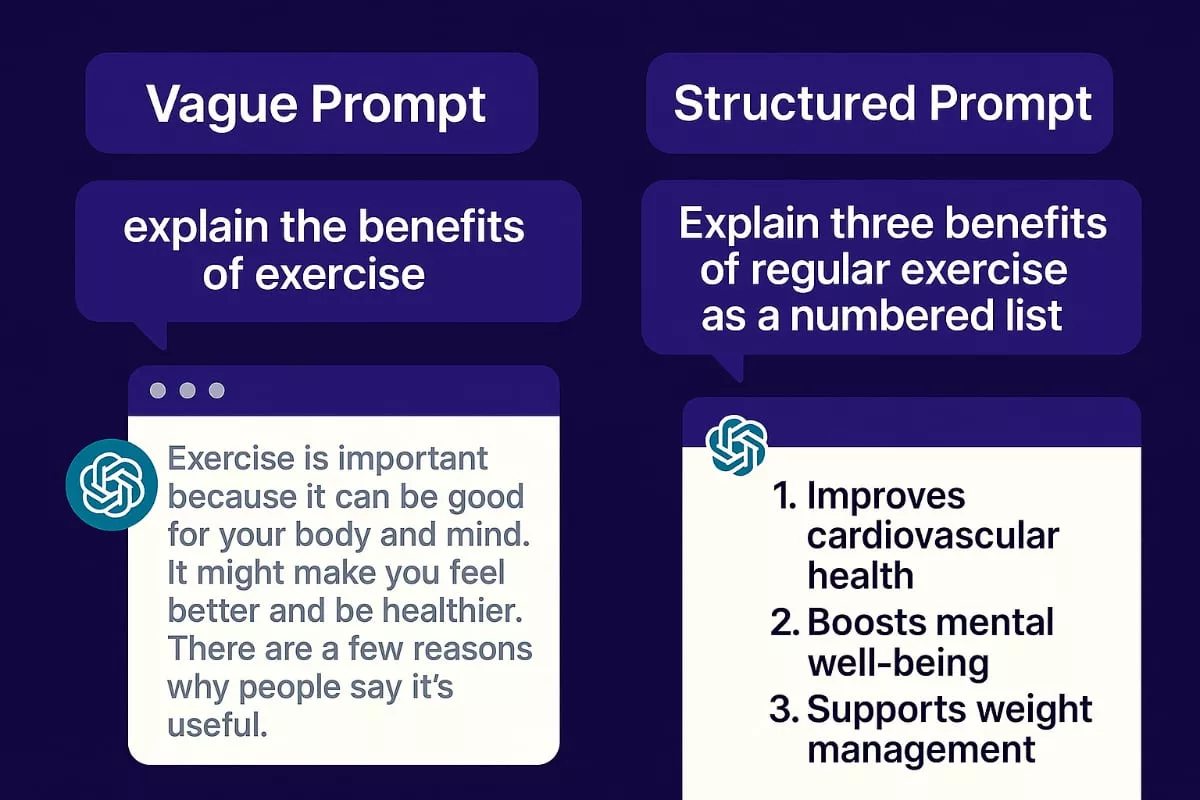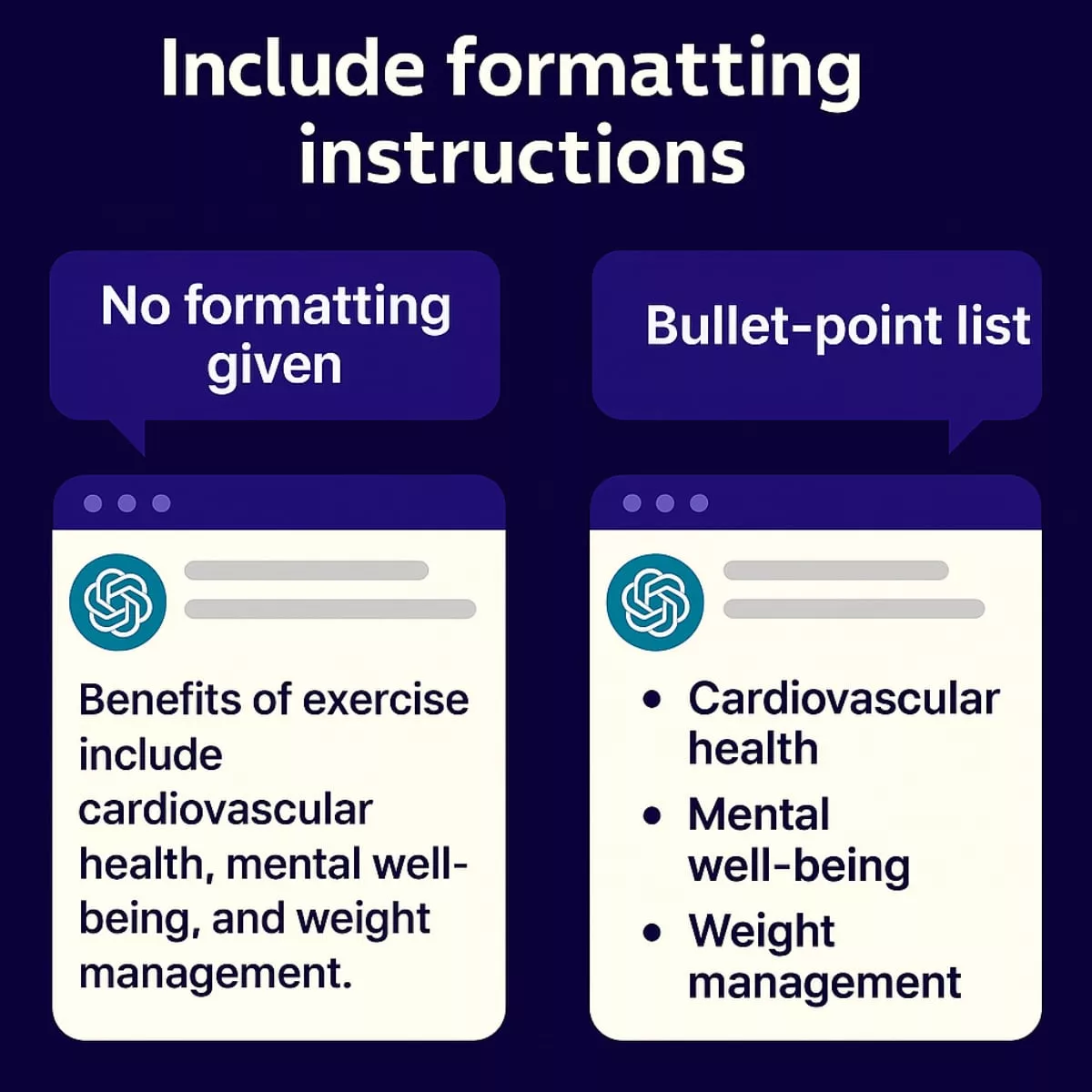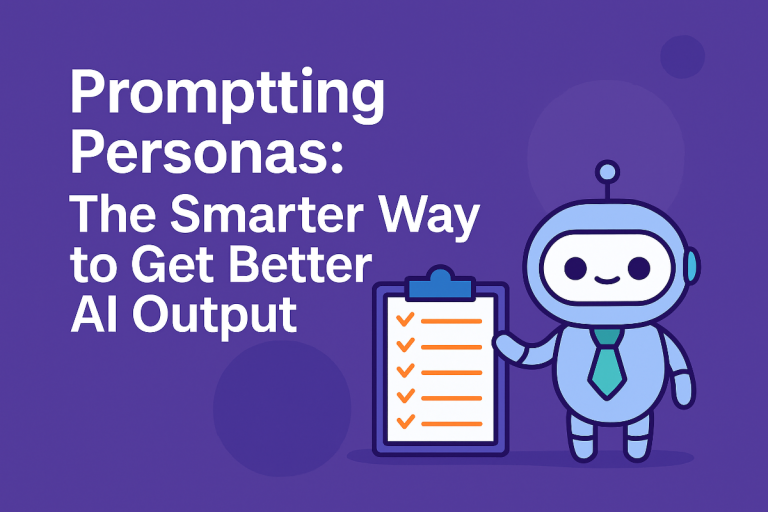How to Write Better Prompts in 3 Simple Steps
If you’ve ever typed a prompt into ChatGPT and gotten a wall of text, a weird answer, or just a shrug-worthy response, you’re not alone. I’ve made every mistake in the book. Back when I first started, I’d ask things like “What are some ideas for my website?” and then stare at a generic list that could’ve been ripped from a 2012 blog post. If you’re just getting started, check out the article 5 Biggest Prompting Mistakes I Made (So You Don’t Have To) before diving in.
It wasn’t until I started paying attention to structure that things changed. Prompting isn’t just about asking, it’s about how you ask.
This post breaks down how to write better prompts in a 3-part structure I now use for nearly every prompt I write. Whether I’m working on content, workflows, or building a Custom GPT, this framework helps me get better, faster answers.
How to Write Better Prompts (Step-by-Step Guide)
Step 1: Set the Role
✅ Why It Matters
Imagine asking a stranger on the street to write your resume vs. asking a hiring manager to review it. Same request, wildly different results.
Giving the AI a role sets the context. It frames how it should think, write, and respond.
🔹 Examples:
🔎 Real-World Use:
I use this daily when editing content. For example, before publishing my Custom GPT article, I prompted:
Act as a technical editor. Make this blog post clearer without losing personality.
The tone tightened up, and it caught small flow issues I’d missed.
Step 2: Define the Task Clearly
✅ Why It Matters
Vague prompts lead to vague answers. You want to describe exactly what you want back, like giving directions to a very smart intern.
🔹 Examples:

🔎 Real-World Use:
When I was writing my Prompting Mistakes article, I asked:
“Give me 3 examples of vague prompts and 3 better rewrites.”
That helped me shape the examples I used in the post — and they’re still some of the most helpful parts of the piece.
Step 3: Add Format Instructions
✅ Why It Matters
AI doesn’t read your mind. If you want bullet points, tables, or sections — say so. This keeps you from getting a wall of text and makes outputs easier to copy/paste or reuse.
🔹 Examples:

🔎 Real-World Use:
Every time I prep GetPrompting content, I use formatting instructions. A typical request might be:
Write 5 prompt templates for brainstorming. Each one should include the prompt, a follow-up, and one note. Format in a 3-column table.
And boom — After a few iterations it gives me something clean and ready to drop into the blog or email.
✨ Final Thoughts: How to Write Better Prompts, The Framework I Actually Use
Here’s the shorthand version I keep in mind:
Role + Task + Format = Clear Prompt
If you’re just starting out, use this as your base structure. You can always expand from there — but it’s a solid foundation.
And if you want ready-to-use templates that follow this exact format, grab the free Prompting Starter Pack from the homepage. It’s full of modular prompts, follow-ups, and strategies that are easy to drop into your AI tools.
Bonus: I’ve found that hearing things explained a few different ways can really make the concepts stick. If you’re more of a visual learner, this quick video by Matt Williams does a great job breaking down basic prompt structure and practical examples.
Stay sharp,
Michael
Creator of GetPrompting.com




